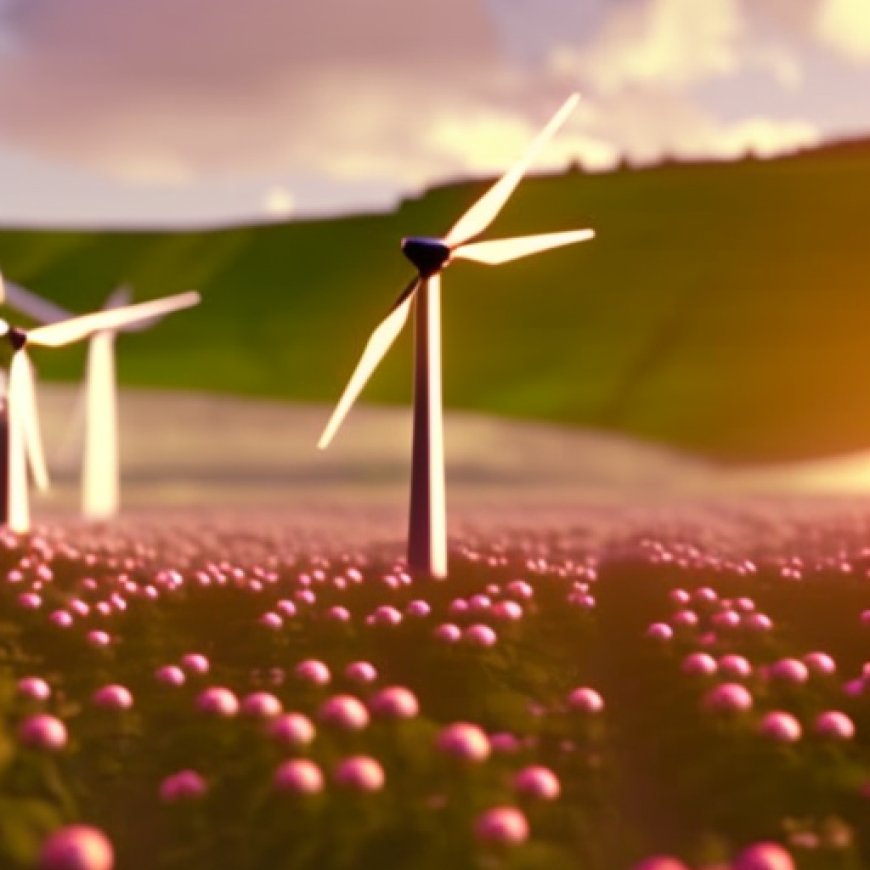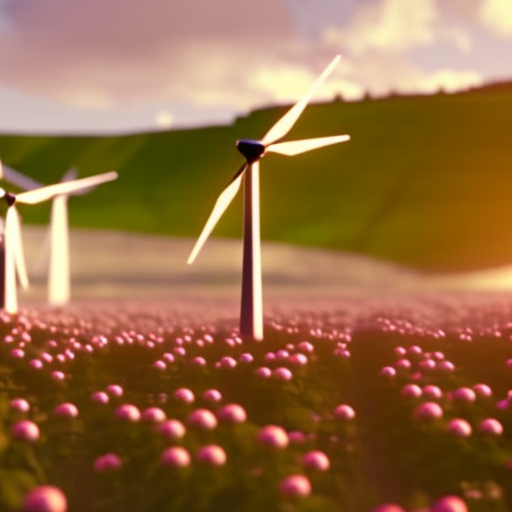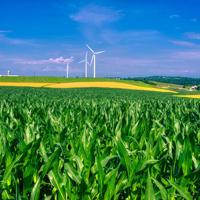Iowa Reaches Milestone on Wind-Energy Production
Iowa Reaches Milestone on Wind-Energy Production | News ... KMAland


Record-breaking Wind Energy Production in Iowa

(KMAlanda) — According to the U.S. Energy Information Administration, wind energy now accounts for 64% of Iowa’s energy production, setting a new record for the state.
This achievement is seen as a significant step towards achieving fossil-fuel independence, aligning with the Sustainable Development Goals (SDGs) set by the United Nations.
Iowa’s Leadership in Wind Energy
Iowa has been a leader in wind energy for decades, and the Iowa Environmental Council (IEC) has set a goal of becoming fossil-fuel independent by 2035.
Transition from Fossil Fuels to Wind Energy
The shift in Iowa’s energy mix has been remarkable, with wind energy dominating over coal and natural gas. According to Michael Schmidt, Staff Attorney at IEC, wind energy has become the least expensive source of energy generation, surpassing the costs of coal even without considering tax credits or subsidies. Additionally, wind energy production has significant advantages in terms of human health and crop preservation compared to fossil fuel-based energy production.
While large utility companies like MidAmerican Energy have entered the renewable energy marketplace, they have not completely abandoned fossil-fuel backups.
Challenges and Changing Sentiment
Alternative-energy producers in Iowa have faced challenges due to the high agricultural value of the land. To install wind turbines, the land must have a low corn suitability ratio, indicating that it is more valuable for wind farmers than for corn farmers.
However, public sentiment in the state is gradually changing as people recognize the value of clean energy. Schmidt highlights the benefits of renewable energy for rural areas and customers across the state.
Iowa’s Commitment to Renewable Energy
Iowa plans to further focus on solar-energy production as costs continue to decline. The state aims to achieve fossil-fuel independence by relying on a mix of alternative energy sources, aligning with the SDGs.
- SDG 7: Affordable and Clean Energy – Iowa’s transition to wind and solar energy contributes to the goal of ensuring access to affordable, reliable, sustainable, and modern energy for all.
- SDG 13: Climate Action – By reducing reliance on fossil fuels, Iowa’s renewable energy efforts help combat climate change and its impacts.
- SDG 15: Life on Land – Wind energy production preserves valuable land for agriculture, supporting sustainable land use practices.
Conclusion
Iowa’s record-breaking wind energy production showcases its commitment to sustainable development and achieving the SDGs. With continued growth in renewable energy, Iowa leads the way in clean energy adoption, even amidst political changes. By embracing a mix of alternative energy sources, including wind and solar, Iowa aims to become fossil-fuel independent by 2035.
SDGs, Targets, and Indicators
1. Which SDGs are addressed or connected to the issues highlighted in the article?
- SDG 7: Affordable and Clean Energy
- SDG 13: Climate Action
- SDG 15: Life on Land
2. What specific targets under those SDGs can be identified based on the article’s content?
- SDG 7.2: Increase the share of renewable energy in the global energy mix
- SDG 13.2: Integrate climate change measures into national policies, strategies, and planning
- SDG 15.2: Promote the implementation of sustainable management of all types of forests
3. Are there any indicators mentioned or implied in the article that can be used to measure progress towards the identified targets?
- Percentage of energy production from wind (mentioned in the article)
- Reduction in coal and natural gas usage for energy generation (implied in the article)
- Increase in the number of wind turbines installed (implied in the article)
Table: SDGs, Targets, and Indicators
| SDGs | Targets | Indicators |
|---|---|---|
| SDG 7: Affordable and Clean Energy | Increase the share of renewable energy in the global energy mix (7.2) | Percentage of energy production from wind |
| SDG 13: Climate Action | Integrate climate change measures into national policies, strategies, and planning (13.2) | Reduction in coal and natural gas usage for energy generation |
| SDG 15: Life on Land | Promote the implementation of sustainable management of all types of forests (15.2) | Increase in the number of wind turbines installed |
Behold! This splendid article springs forth from the wellspring of knowledge, shaped by a wondrous proprietary AI technology that delved into a vast ocean of data, illuminating the path towards the Sustainable Development Goals. Remember that all rights are reserved by SDG Investors LLC, empowering us to champion progress together.
Source: kmaland.com

Join us, as fellow seekers of change, on a transformative journey at https://sdgtalks.ai/welcome, where you can become a member and actively contribute to shaping a brighter future.







